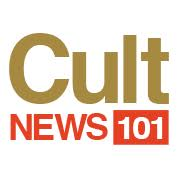MARCH 21, 2016
DOUG GIBSON
Standard-Examiner Staff
OGDEN — In June, hundreds of individuals with a passion for Mormon history will gather at Snowbird for the Mormon History Association’s 51st annual conference.
It’s a several-days whirlwind of scholars and history buffs discussing papers, sharing research, analyzing others’ work, touring areas with connections to Mormon history and — if you’re in a position to eavesdrop — hearing hints about researchers’ next big news.
Besides its conference, the MHA publishes a quarterly, “The Journal of Mormon History,” that its members receive. As the organization states, it “exists to foster scholarly research and publication in the field of Mormon history.”
”The average member of the church doesn’t know a fraction of its history,“ said Robert Racker, executive director of the MHA. There are many resources out there, both apologetic and more critical. He cites FairMormon, an apologetic site, and Sunstone, a group that publishes a magazine and holds an annual symposium, as distinguished groups.
“But none of them have the objectivity and independence of the Mormon History Association,” Racker added. An unvarnished, scholarly look at the LDS Church’s history is the mission of the MHA.
The Snowbird conference, scheduled for June 9-12, will be packed with scholars — Richard Bushman, Terryl Givens, Audrey Godfrey and John Sillito are just a few. But there will be many non-scholars there. “You’ve got history buffs,” Racker said.
LAYTON SCHOLARS PART OF SESSIONS
Two of the presenters at the Snowbird conference will be Brian Hales and Craig L. Foster, both Layton residents. Neither are from academic backgrounds.
Hales, an anesthesiologist, has written several books on early LDS polygamy. His session discusses potential DNA evidence that Mormon founder Joseph Smith fathered a child with a woman named Josephine Lyon in Nauvoo. Ugo Perego, of Brigham Young University, will provide results of new DNA testing.
”The results will be shared with the audience,“ Hales said. It’s an example of the “cutting-edge research ... presented at symposiums like the MHA.”
Hales’ wife, Laura, will also be presenting at the conference in a session on historical and cultural insights into the LDS concept of heaven.
Foster, who has co-edited the “Persistence of Polygamy” volumes dealing with the church’s history of polygamy, is part of a session on early fundamentalist Mormonism and one of its individuals, Nathaniel Baldwin.
Davis County played role in fundamentalist Mormonism, said Foster, who works at the LDS Family History Library. An example is the “Steed family,” which eventually migrated south, producing descendants such as Warren Jeffs, the former polygamous leader now in prison.
“Off and on, I have done research ... for at least a couple of decades,” Foster said. He started the polygamy book series in 2009 and has plans for another book.
“History is my extreme sport,” Foster said. His kids grew up “with dad sitting at the table doing research.” Researching and finding new information is like an adrenaline rush, he said.
Hales said he has the same excitement discovering something new. After discovering facts — when looking at an 1869 document — that undermined a previously held belief, “I had trouble sleeping that night.”
EARLY RUMORS OF MAJOR FINDS
Racker was privy to a conversation at last year’s conference. At the time, those hearing the news were sworn to secrecy. Eliza R. Snow, Mormon icon of the 19th century and author of the famous LDS hymn, “O My Father,” was raped in Missouri, he said.
Recently, Andrea G. Radke-Moss, of Brigham Young University, Idaho, revealed that same information to the media. It’s a major historical find that received extensive media coverage.
“I learned about this last June at the dinner table,” Racker said.
Scholarly work goes through a process, Racker explained. “Good,” “solid” and “well-documented” are all phases that have to be completed. Sometimes, research doesn’t pass all the phases, and it’s dropped by scholars.
The dozens of 40-minute sessions at an MHA conference can be a synopsis for a future book. “Most of the talks delivered at the Mormon History Association are seed for a book. (Presenters) get feedback and see what kind of interest it generates,” Racker said.
A BETTER, MORE TRANSPARENT HISTORY
Racker describes the old version of church history, “the Institute/Seminary version,” as an “innoculation” that many members grew up with. The Internet and wide dissemination of incidents in church history that involve polygamy, racism, the Mountain Meadows Massacre and the like are shocking. “People feel betrayed,” he said.
The MHA, with its journal and conferences, fills a much-needed role. “It’s good scholarship, wherever the chips may fall,” Racker said.
“Certainly, there are things in our history that require faith and personal conviction of members,” Hales said. “It’s up to us as believers to investigate the truth.”
Hales said church leaders agree the days of church members being advised to “forget about it” or “pray about it” when seeking more knowledge is gone. He cited LDS apostle M. Russell Ballard, who said in a recent speech, “We have heard stories where someone asking honest questions about our history, doctrine or practice were treated as though they were faithless. This is not the Lord’s way.”
Efforts such as the Joseph Smith Papers and the Gospel Topics essays at the church’s website, lds.org, underscore the recent transparency. “The Latter-day Saints are now encouraged by their leaders to get involved and do their research,” Hales said.
More information about attending the Mormon History Association’s conference can be found on the organization’s website.
Reporter Doug Gibson can be contacted at dgibson@standard.net. You can follow him on Twitter at @PoliticalSurf or like him on Facebook at facebook.com/douggibsonSE/.


No comments:
Post a Comment